The 10 Weirdest Spacecraft Ever Proposed
For every spacecraft successfully launched into space, there are many proposed spacecraft that never see the light of day. While some of these proposed spacecraft are realistic interpolation of existing technology, others speculate about future technological development.
The vehicles' weirdness either comes from its design, fuel source, or mission goals. But all were not developed for a variety of reasons, from simple budget issues to dealing with highly speculative technology.
Here is the list of the 10 Weirdest Spacecraft ever proposed by scientists and engineers:
1. Belcomm Manned Venus Flyby
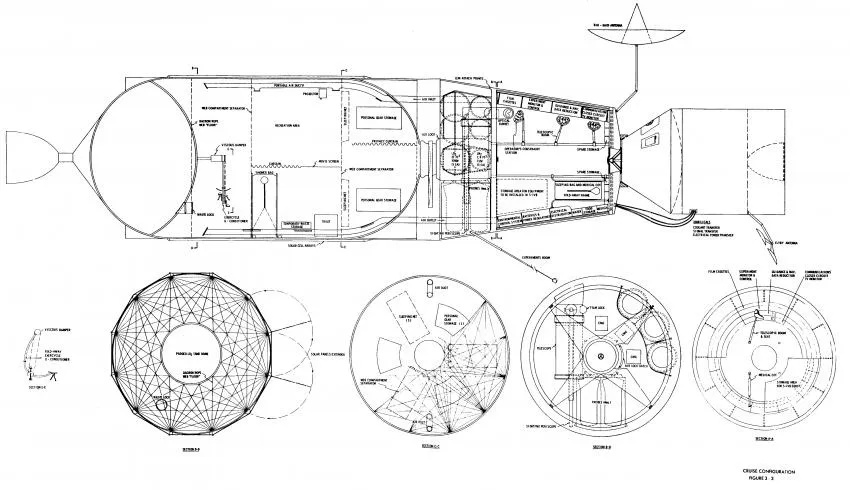
A proposal from the Apollo Application Program to show Congress potential future uses for the technology developed for the Apollo program. While some of these proposals were reasonable, like a space station or a moonbase, there were some more absurd proposals like a crewed flyby of Venus.
The proposed craft would be a space station made out of the upper rocket stage of Saturn V. This upper stage would however only be habitable after the fuel stored in it was all used to get it into an orbit that would both pass by Venus and return to Earth.
This project did not go forward for a ton of reasons. The main reason was that the project was too expensive, and mission goals could be fulfilled more cheaply and safely by a robot probe. The other being that having to rocket fuel proof a space station worth of equipment was an expensive and complicated proposition.
2. Project Orion
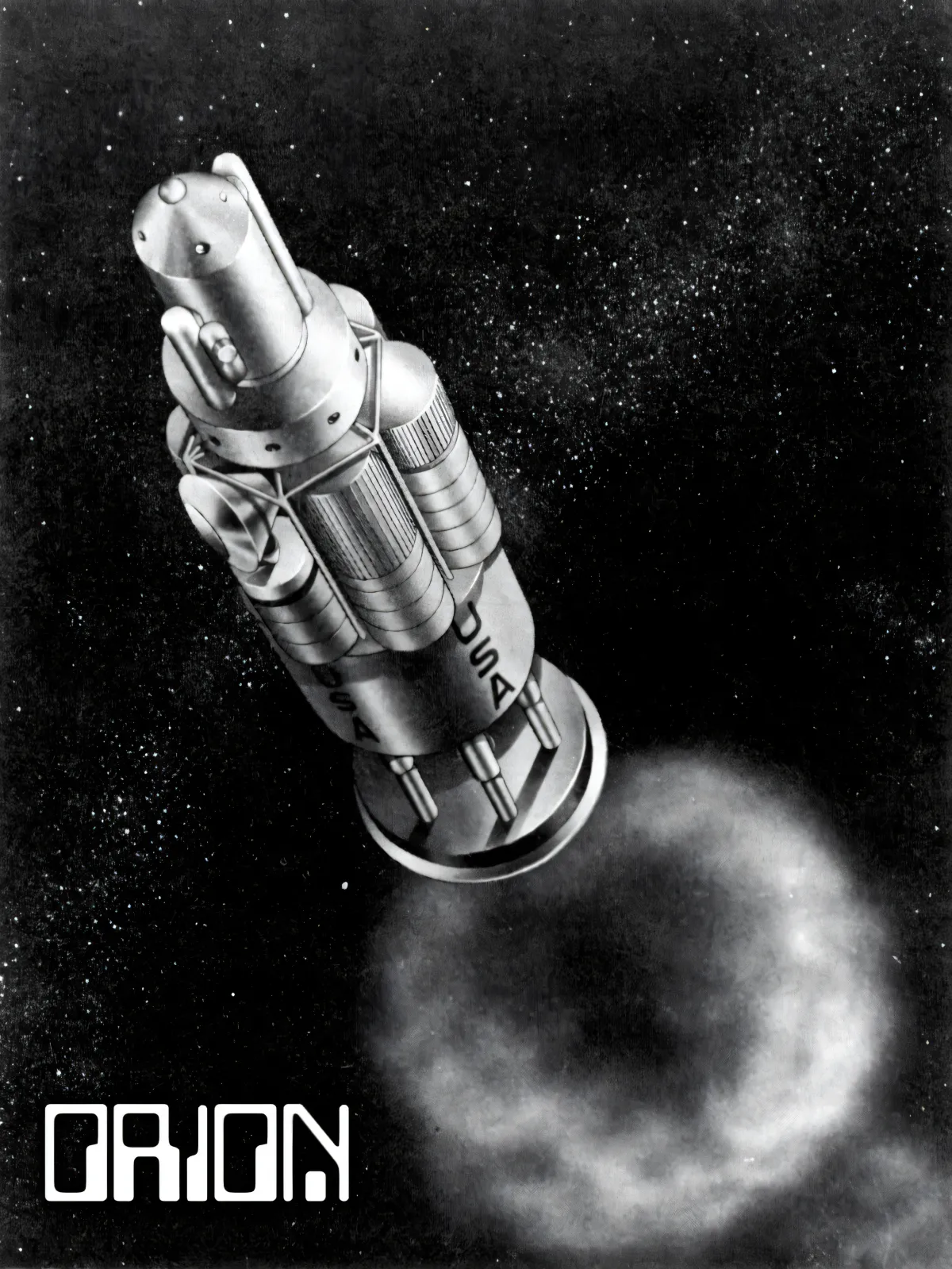
The most well-known design here, Project Orion, is a spacecraft propelled by a nuclear explosion created by a small bomb. First proposed General Atomics in the late 1950s, Project Orion's purpose was to get a massive amount of cargo from the Earth's surface and travel to other planets.
Neither the US air force nor NASA accepted Project Orion. The reason that the air force was not interested in developing a space program. For NASA, the lack of interest resulted from Project Orion rendering their Saturn V project redundant. Project Orion was ultimately killed by the partial test treaty-ban of 1963 preventing the use of nuclear weapons in space.
3. HELIOS
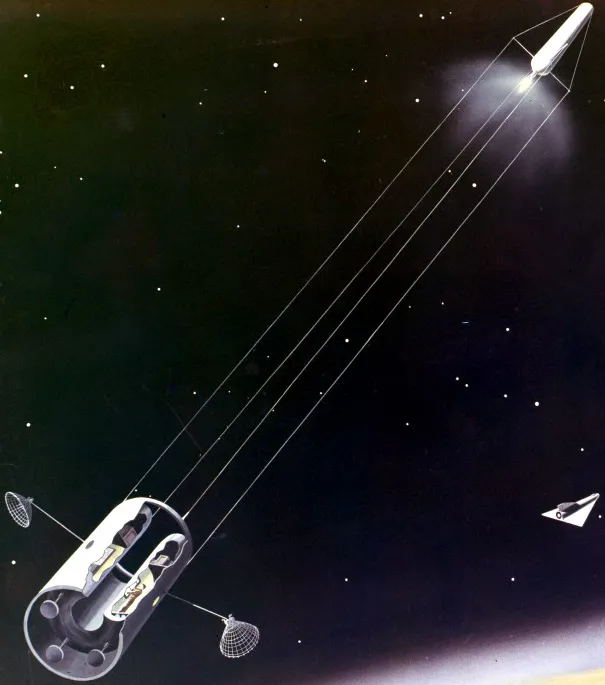
Proposed by rocket scientist Krafft Ehricke in 1959, the HELIOS was an interesting-looking design for a nuclear-powered rocket. HELIOS was an acronym for Heteropowered Earth-Launched Inter-Orbital Spacecraft and was a proposal for a craft meant to go and land on the moon.
The HELIOS' design was a nuclear rocket dragging a crew capsule behind it at 300 meters to prevent the crew from being exposed to radiation created by the rocket engine. The reason for the rocket's location in front of the crew capsule was to make a moon landing easier as the crew would not need to climb down a ladder of a tall rocket.
The design did not go through for many reasons. The reasoning ranged from the Saturn V being easier to develop; to NASA having cold feet on developing nuclear rockets. The project's final blow was the discovery that a 300 meters separation was too little distance to protect astronauts from the engine's radiation.
4. Project MALLAR
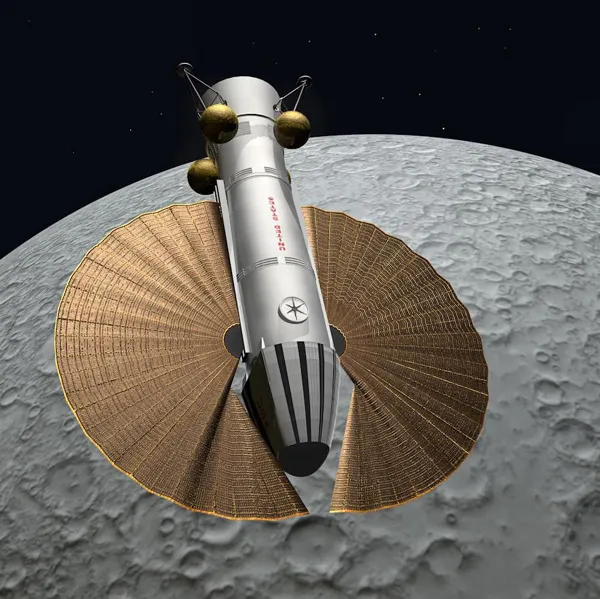
During the late 50s and early 60s, NASA created a massive body of proposals for a future Moon mission that includes the HELIOS proposal. One of the more bizarre-looking but practical in design was Project MALLAR.
Project MALLAR was proposed in 1961 by Bill Michell and was plans for the craft to enter a parking orbit around the moon and then detach a smaller lander to land on the moon. What makes this design weird was Michell giving the craft a massive solar array that made it look like it had wings.
While NASA initially did not support Mitchell's idea, they ended up vindicating his theory in the end. While NASA did not use his design, the Apollo Program used his concept of a multipart lunar orbiter that detached a smaller lander.
5. Cole Aldebaran
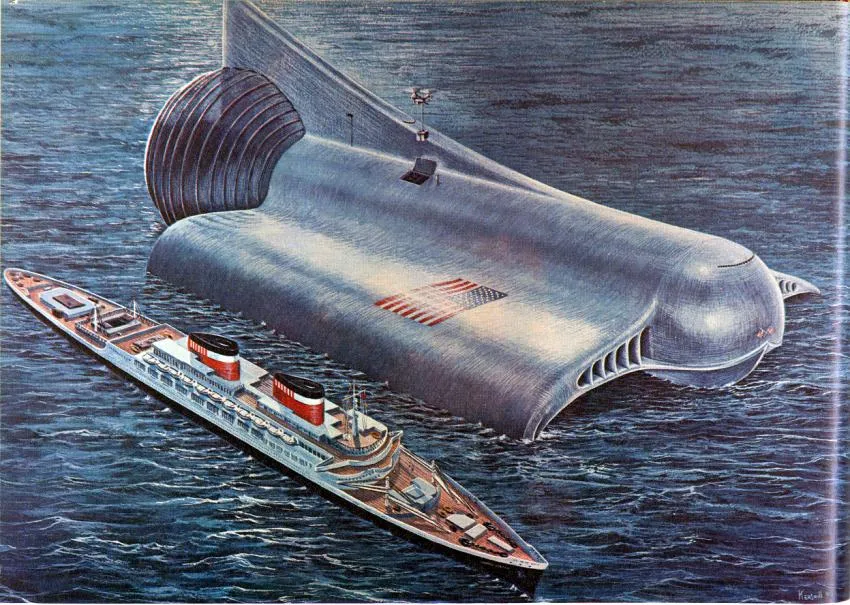
The Cole Aldebaran was the strangest plan resulting from the Cole Nuclear Pulse engine. Designed by aerospace visionary, Dandridge Cole in response to his view that the Project Orion was inefficient and wasted most of the energy created by a nuclear bomb, not knowing that Project Orion had bombs designed to make them more efficient.
Cole proposed to have the bomb be exploded in a gigantic reaction chamber with a nozzle at the bottom to funnel the explosion to propel the craft. One of the designs proposed to use this engine was Cole Aldebaran. The Cole Aldebaran was the massive jet launched from the ocean surface because the seawater would both help funnel the explosion and cool the engine.
Nobody ever built a Cole Nuclear Pulse Engine for similar reasons to Project Orion, but the Cole Alderbaran had some additional issues. Mainly that the Cole Aldebaran had a more open engine that would create a massive amount of nuclear fallout.
6. Langely Unpressurized Crew Xport
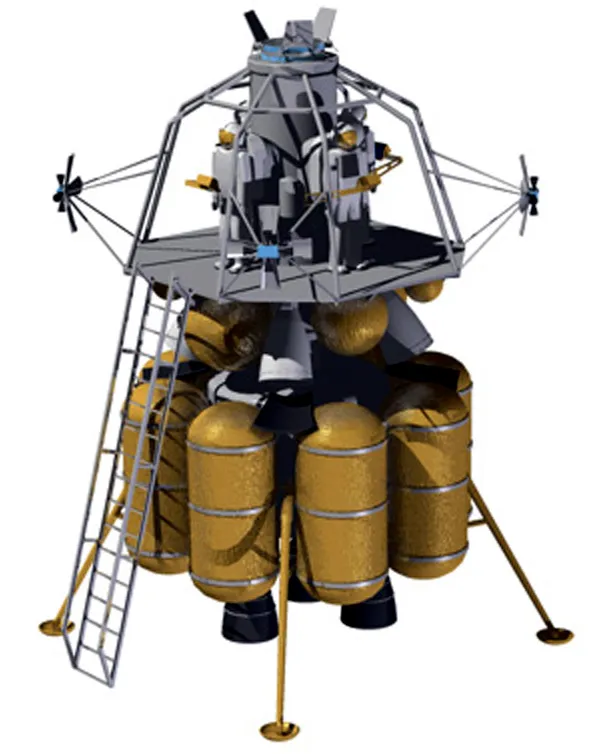
The Langely Unpressurized Crew Xport answers the question of what would be the minimum required for a working lunar lander. A recent proposal in 2019 for the upcoming 2024 Artemis missions to the moon. Langely designed the lander around a technology called Suitport. Suitport is simply a spacesuit that serves as an airlock for a vehicle.
What moves design into the weird is its ascent stage. Mainly that instead of pressurized, this craft's ascent stage would require Astronaut to wear spacesuits on an exposed metal platform on the ride back to orbit. It's very telling that in 2020, NASA did not approve this proposal to be the lander for the Artemis program.
7. Kuck's Mosquito
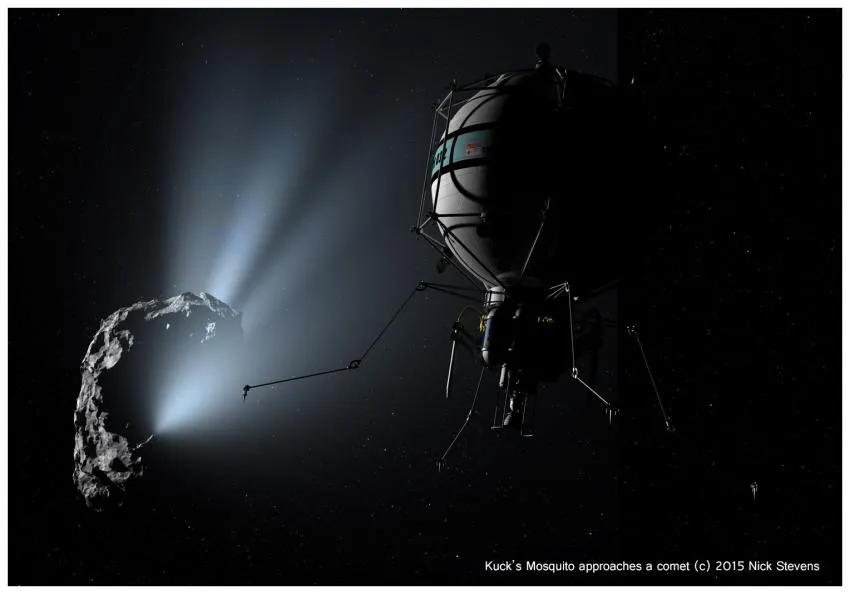
Not all weird spacecraft designs are for a crewed mission; Kuck's Mosquito is an uncrewed one. Engineer David Kuck designed this craft to serve as the base for future infrastructure for interplanetary colonization. The Kuck's Mosquito weirdness comes from its simple design.
The Kuck's Mosquito is a water-filled bag with a rocket attached to it and the addition of some steam-powered drill. This simple craft's mission is to travel to comets and asteroids to mine water from them. This water then can be used for water, rocket fuel, and oxygen for other space missions.
Unlike previous entries, the Kuck's Mosquito has no one has rejected it and could still serve the future development of space-based infrastructure.
8. Water Balloon Ship
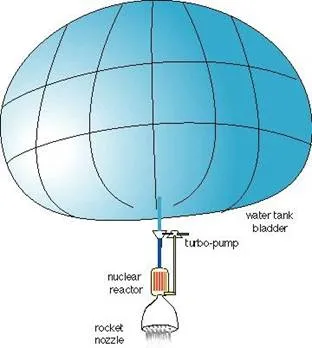
A close cousin of the Kuck's Mosquito, Anthony Zuppero proposed design is an uncrewed craft designed to transport a ton of water from the Martian moon of Deimos to low earth orbit. Like the mosquito, the Water Balloon Ship's weirdness comes from its simplicity.
Water Balloon Ship designed is simple in concept. The ship is a giant balloon that stores water collected from either added mining equipment or a separate mining craft. A nuclear-powered rocket then propelled the ballon towards a low-Earth orbit.
9. Gevaltig
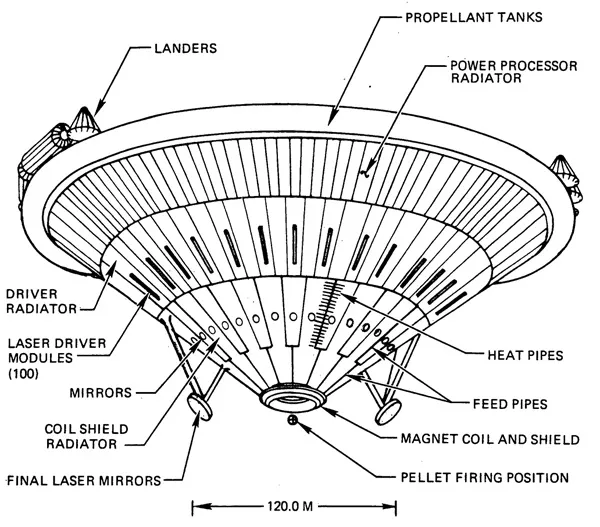
Gevalitig is an overkill answer to the question of how to get to Mars in 100 days. The craft was designed in 1989 by Lawrence Livermore National Laboratory for the Vehicle of Interplanetary Space Transport Application. Gevaltig is a giant engine powered by fusion.
The Gevaltig is a massive craft standing over 200 meters tall. The spacecraft is an engine covered in radiators thanks to the heat created by its fusion reactor. On the engine's top is a circle of habits and lander for the mars mission.
The craft has remained unmade for a ton of reasons. For one, the spacecraft required an undeveloped fusion reactor. The other main reason is the engine is very inefficient and massive compare to other Mars mission proposals.
10. Mars Umbrella Ship
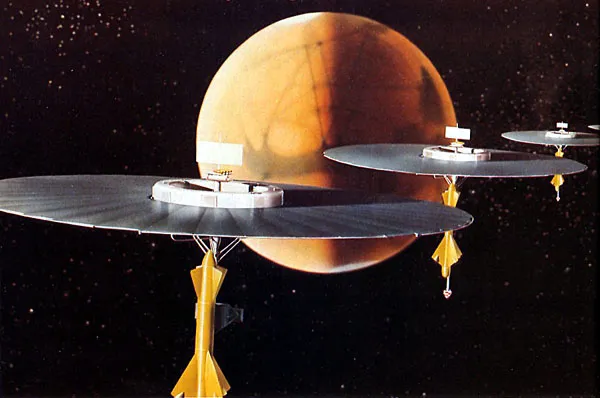
The Mars Umbrella Ship was one of the first proposed a crewed expedition to Mars. The craft was designed in 1957 by Ernst Sthulinger for the US Army Ballistic Missile Agency study for a potential Mars mission. The design was rocketed to fame thanks to it appearing in the Disney-produced documentary Mars & Beyond.
The craft is a space station propelled by an ion drive and powered by a nuclear reactor separate from the rest of the spacecraft by a long column. The spacecraft also includes a rocket dispatchable for landing on Mars.
NASA never developed a spacecraft due to the design not fitting well with the path that space exploration technology was developing towards. Another reason is that the craft's ion drive is way too weak to propel a spaceship to Mars.
Conclusion
These ten spacecraft represent some of the weird highlights of the proposed spacecraft design. These spacecraft scratch the surface of this large body of proposed spacecraft and their exact technical details. These spacecraft also represent alternate and future paths that space exploration could take.
I am sure this list will spark an interest in examining the fun world of proposed spacecraft.
Opinions and Perspectives
The nuclear propulsion concepts were ambitious but maybe too ahead of their time.
Converting fuel tanks to habitats was clever. We need more of that kind of creative thinking.
The exposed platform design seems incredibly dangerous. Glad that one didn't get approved.
Water mining from comets still makes sense as a concept. We might see something like the Mosquito in the future.
It's fascinating how many different approaches they considered for solving space travel challenges.
The ocean launch platform idea wasn't completely crazy. We do similar things today.
Some of these ideas were just ahead of their time. The technology wasn't ready yet.
Nuclear propulsion still makes sense for deep space missions. These designers were onto something.
Project Orion could have revolutionized space travel if not for the nuclear test ban treaty.
These designers were really pushing the boundaries of what they thought was possible.
The tether concept from HELIOS is similar to modern proposals for rotating artificial gravity systems.
Water really is the key resource for space exploration. Those water-focused designs were onto something.
The Gevaltig fusion drive concept was interesting, just way too ambitious for the technology available.
I appreciate the creativity in these designs, even if they weren't practical.
The Venus flyby mission seems incredibly optimistic about life support systems.
Project MALLAR really was ahead of its time with those solar arrays. Pretty impressive for 1961.
It's amazing how many different approaches they considered for getting to Mars. We're still working on that problem.
The ocean launch idea wasn't completely crazy. Sea Launch proved that ocean-based launches can work.
I can see why NASA wasn't keen on most of these. The complexity and risk factors were just too high.
The Mosquito design is brilliant in its simplicity. Sometimes less really is more in space engineering.
These designs really show the evolution of our understanding of space travel requirements.
Converting rocket stages into habitats was clever. We should reuse more space hardware like that.
Some of these concepts seem absurd now but they helped push the boundaries of what we thought was possible.
That exposed platform design makes me nervous just thinking about it. Space is dangerous enough with proper protection!
The water mining concepts were really forward-thinking. We're still talking about similar ideas for space resources.
I'm surprised how many of these focused on nuclear propulsion. Shows how optimistic they were about nuclear technology.
The Mars Umbrella Ship looks impractical but the basic idea of nuclear-electric propulsion is still relevant.
Project Orion would have been amazing to see in action, even if just as a test. The visuals would be incredible.
The Mosquito concept could work well with modern autonomous systems. Might be worth reconsidering.
Imagine the maintenance nightmares on some of these designs. The complexity would have been overwhelming.
The Venus flyby mission seems unnecessarily risky. Robotic missions make so much more sense for that kind of exploration.
These proposals show how much trial and error goes into spacecraft design. We learned from each crazy idea.
The ocean launch concept for Cole Aldebaran is fascinating, even if impractical. Similar to modern sea launch platforms.
The Unpressurized Crew Xport seems like a step backwards. We shouldn't compromise astronaut safety to save weight.
I love how they tried to solve the radiation problem with HELIOS. Not the best solution, but they were thinking about crew safety.
Some of these designs were way ahead of their time. The solar arrays on MALLAR are similar to what we use today.
The Water Balloon Ship concept still has merit. We'll need water transport for future space colonies.
A 300-meter tether would make docking incredibly challenging. I can't imagine trying to manage that.
Interesting how they wanted to convert the Saturn V upper stage into living space. We're doing something similar with Starship now.
The tether idea from HELIOS wasn't completely crazy. We use similar concepts for gravity assists in modern spacecraft.
I find it interesting how many of these designs tried to solve radiation shielding. It's still a major challenge today.
The fusion-powered Gevaltig reminds me of modern proposals for nuclear thermal propulsion. Same concept, just way more reasonable scale.
These designs really show how our approach to space travel has evolved. We've gotten much more practical over the years.
The Langley proposal sounds absolutely terrifying! I'm glad NASA had the sense to reject that one.
That's a good point about the Mosquito design. Simple solutions often end up being the most practical in space exploration.
I wonder if some of these designs could be revisited with modern technology. The basic concepts might work better now.
The Gevaltig seems like massive overkill. 100 days to Mars is impressive but at what cost? The size alone makes it impractical.
Project MALLAR was definitely ahead of its time with the modular approach. Pretty much predicted how we ended up doing lunar missions.
The Cole Aldebaran launching from the ocean is such a bizarre concept. I can't imagine the environmental impact studies that would require today.
I agree about Project Orion being wild, but you have to admit the physics behind it was sound. The main issue was political, not technical.
A giant water balloon in space sounds like a disaster waiting to happen. One micrometeorite and the whole mission is ruined.
The Belcomm Venus flyby proposal seems incredibly risky. Imagine being stuck in a converted fuel tank for that long of a mission.
Actually the Kuck's Mosquito makes a lot of sense for mining water from comets. I could see something like that being developed in the future.
You have to admire the ambition of these early space pioneers, even if some ideas were completely bonkers.
The 300-meter tether on HELIOS seems so impractical. I'm surprised they thought that would be enough distance from a nuclear reactor.
That Mars Umbrella Ship looks like something straight out of 1950s sci-fi. Love how optimistic they were about ion drives back then.
As crazy as Project Orion sounds, I wonder if something similar might be viable for deep space missions where radiation concerns are less of an issue.
Can't believe they seriously considered having astronauts ride an exposed platform back from the moon with the Langley design. Talk about a terrifying space rollercoaster!
The Water Balloon Ship concept is actually quite clever in its simplicity. Sometimes the best engineering solutions are the most straightforward ones.
I find it fascinating how many of these designs relied on nuclear power. Project Orion seems absolutely wild using actual nuclear bombs for propulsion!
